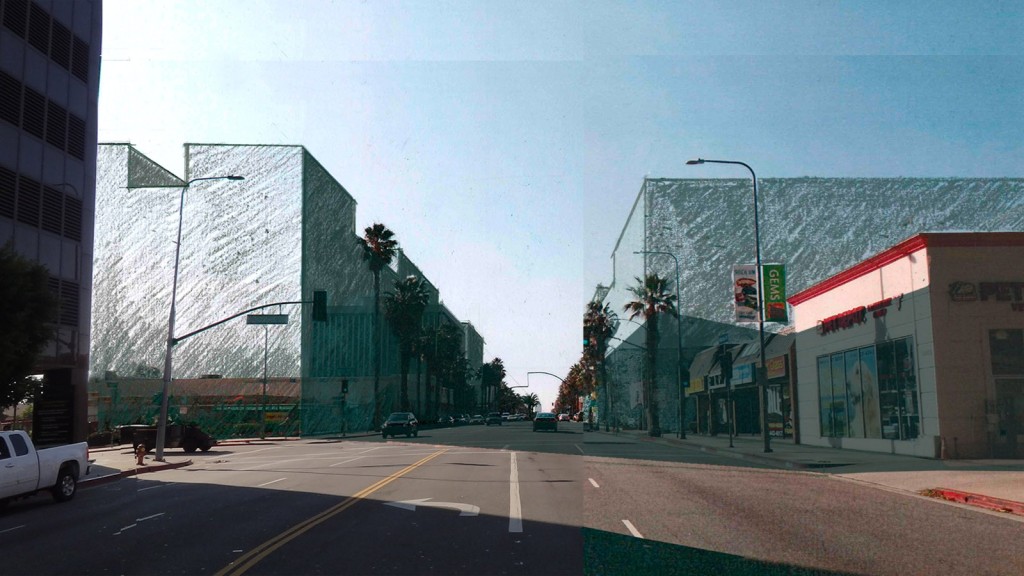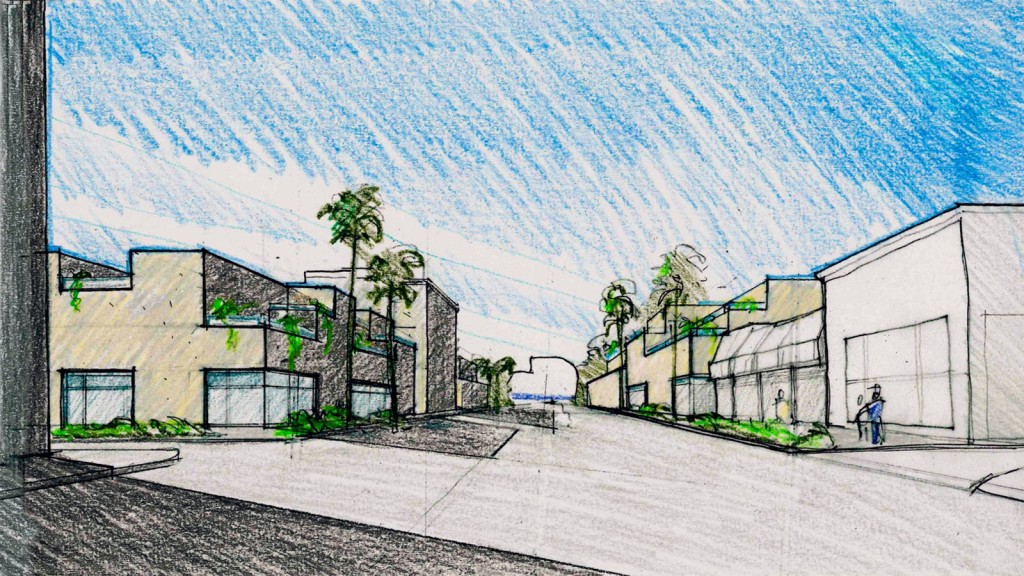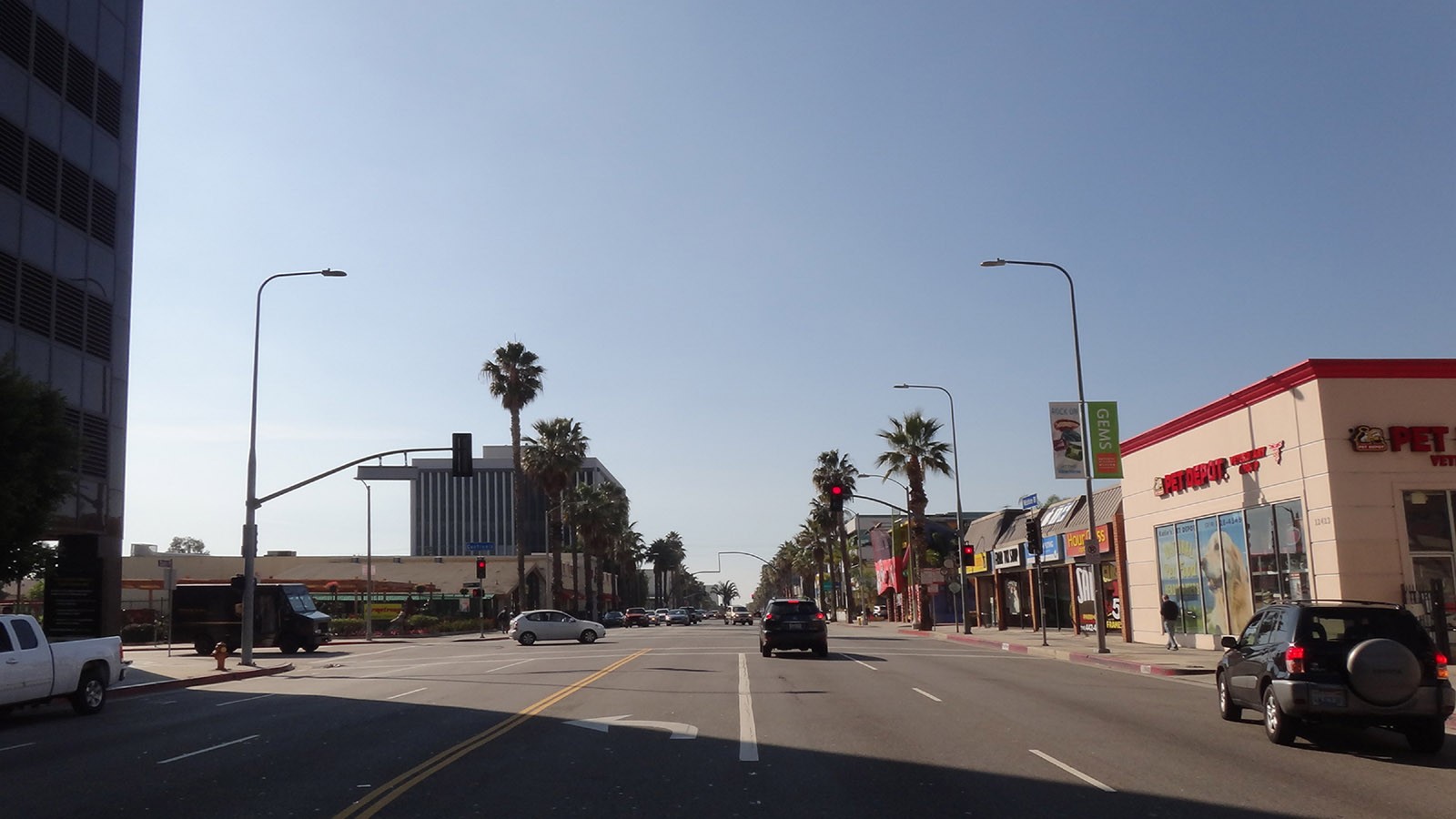
On January17, 2015 SMa.r.t. posted a prophetic article in the Daily Press written by Ron Goldman FAIA advocating maintaining a low rise (3-4 stories) development standard along the major boulevards. He also included a sketch showing the negative alternative of 6-7 story buildings. Naturally there was outrage and push back from the establishment. The mayor said “I saw it and was greatly dismayed by the hyperbolically inaccurate visual representation of what is possible under Santa Monica zoning. You and the other architects must know better than that, and I was disappointed you would sign your names to that piece. I can only hope that perhaps you didn’t see the accompanying images in advance.”
Flash forward 8 eight years and sure enough the major boulevards are now up zoned in our most recent Housing Element to the 60’ to 70’ (5-6 stories) range with, and when given density bonuses for affordable housing, can balloon up to 82’-103’ (7-9 stories). So now you can see for yourself “the accompanying images in advance” in the reprinted article below. Fortunately the council has asked the state not to up zone just the Neighborhood Commercial zones( Pico, Main, Montana, and Ocean Park). Other major boulevards will still be up zoned. We will see if the State will honor that request to avoid the grim future Ron predicted. Needless to say, the same discussion that was relevant 8 years ago, is still surprisingly relevant today.
Our Boulevards- dark tunnels or sunlit paths to the sea? (SMDP 1/17/15)
Cities are entered and organized around their major boulevards. The 9 boulevard entrances to our City are San Vicente, Wilshire, Santa Monica, Broadway, Colorado, Olympic, Pico, Ocean Park and Lincoln. Along our boulevards are over 900 buildings. 87% of these structures (783 total) are currently 1 & 2 story buildings- a potential “gold mine” if properly developed.
If 1/3 of these buildings were to remain as is, or be developed through adaptive reuse with tax incentives, the remaining 525 buildings could be redeveloped as 3 or 4 story buildings. If so, these new projects could provide 15 million sq.ft. of additional leasable area while still leaving 30% open space. Is our City’s appetite for growth so great that this would not satisfy our needs for the near future? The following sketches provide markedly different visions for the future of the Boulevards and our City. Will Santa Monica become an extension of Los Angeles or will it retain its small beach town character?
The current alternative approach allows doubling building heights to 6 or 7 stories, concentrating development into fewer structures and creating a cityscape more akin to West Los Angles than Santa Monica. Shadows will cover the E-W Boulevards for a large part of the day and these structures would be adjacent to neighboring homes resulting in significant negative impact on their livability. The new California codes regulate shading of adjacent properties and need to be enforced.

Re-developing to 3 or 4 stories could more than double current square footage, a substantial increase without impacting the City’s low-scale skyline. Another advantage is the City’s density could be spread over larger areas and time frames, minimizing the impact of density and vehicles in any single location. This would allow the City to grow at moderate pace and impact residents less while maintaining the City’s small town allure.

he other advantage is that it would preserve some of our historic building stock providing continuity with the past and preserving the unique character of our City for the future. And our Zoning code needs to encourage adaptive reuse of existing 1 & 2 story buildings – especially on narrow lots that don’t permit 3 & 4 story redevelopment. The retention of 1 and 2 story buildings might also provide additional workforce housing.
If not, we won’t know what we’re losing until it’s gone. The LUCE has a clearly stated goal of “Overall Height Reduction.” A simple 30-40-50 ft. code would provide clarity for developers as well as protect residents with an iron- clad cap on building heights. We need to close the Development Agreement (D.A. ) loophole that allows developers to exceed height limits through the provision of “Community Benefits”. These D.A.’s are one of the biggest causes of community distrust. The trade-off of community benefits for increased density, height, traffic and parking along with increasing land values resulting in higher rents and loss of local business is not an exchange that serves our community. Instead, the City should simply increase permit fees and use these funds to widen existing sidewalks, improve landscaping and enhance the function and beauty of our most important asset – our boulevards.
By Ron Goldman,
S.M.a.r.t Santa Monica Architects for a Responsible Tomorrow
Thane Roberts, Architect, Robert H. Taylor AIA, Architect, Dan Jansenson, Architect & Building and Fire-Life Safety Commission, Samuel Tolkin Architect & Planning Commissioner, Mario Fonda-Bonardi AIA & Planning Commissioner,, Michael Jolly, AIR-CRE.
For previous articles see www.santamonicaarch.wordpress.com/writing













